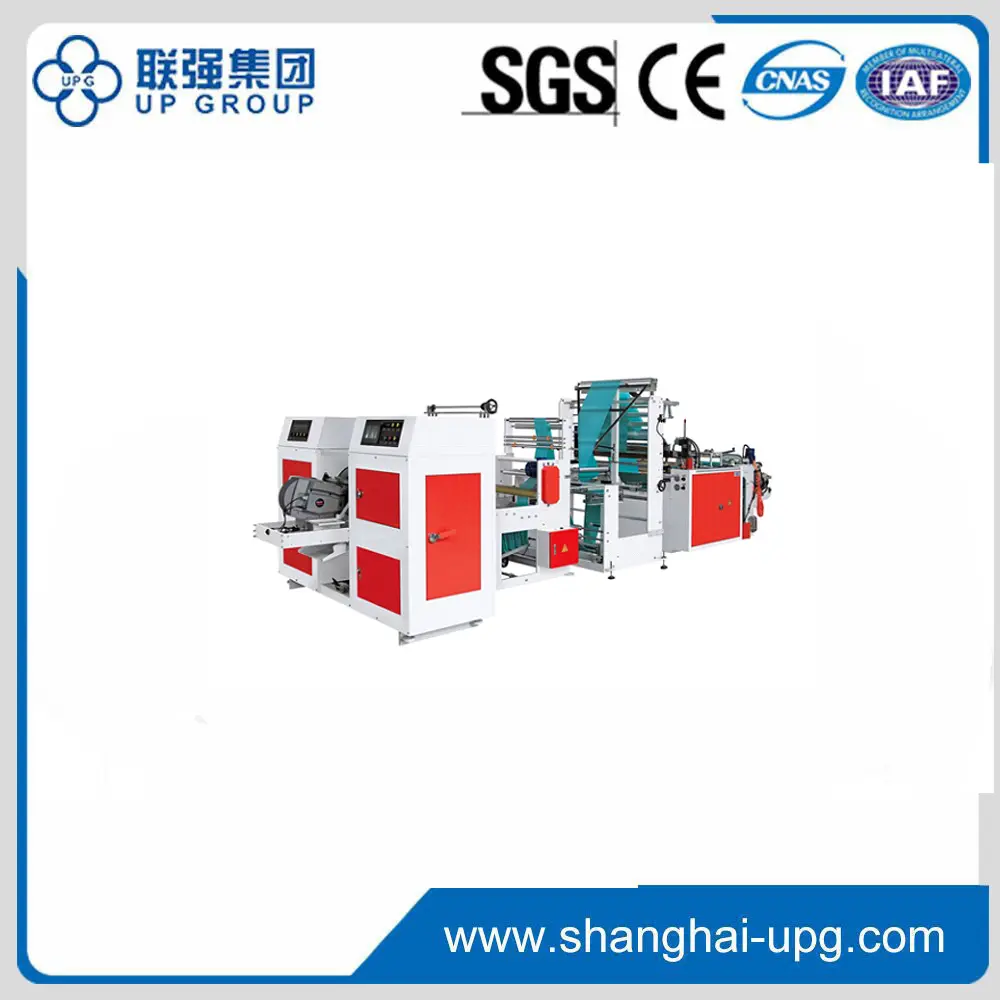In today's fast-paced world, plastic bags have become an integral part of our daily lives. From grocery shopping to packing goods, these versatile bags have a variety of uses. However, the production of plastic bags is a complex process involving specialized machinery called plastic bag making machines. In this article, we’ll explore how these machines work and take a closer look at the most common materials used in plastic bag production.
Plastic bag making machines are designed to manufacture plastic bags efficiently and in high volumes. These machines can produce various types of bags, including flat bags, gusset bags, vest bags, etc. The process typically involves several key steps:
1. Raw materials: The main raw material of plastic bags is polyethylene, which has different densities, such as low-density polyethylene (LDPE) and high-density polyethylene (HDPE). The plastic bag making machine first feeds the plastic resin pellets into the extruder.
2. Extrusion: The extruder melts the plastic pellets and forms a continuous tube of molten plastic. This process is crucial as it determines the thickness and quality of the final product.
3. Blow Molding and Cooling: In the case of blown film extrusion, air is blown into the molten tube to expand it to form a film. The film is then cooled and solidified as it passes through a series of rollers.
4. Cutting and Sealing: After the film is produced, it is cut to the required length and sealed at the bottom to form a bag. The sealing process may involve heat sealing or ultrasonic sealing, depending on the design of the machine and the type of bag being produced.
5.Printing and Finishing: Many plastic bag making machines are equipped with printing capabilities that allow manufacturers to print logos, designs, or messages directly onto the bags. After printing, the bags undergo quality inspection before being packaged for distribution.
Please refer to our company’s this product, LQ-700 Eco Friendly Plastic Bag Making Machine Factory

LQ-700 machine is bottom sealing perforation bag machine. Machine has two times triangle V-fold units, and film can be fold one time or two times. The best thing is that the position of triangle fold can be adjusted. Machine design for sealing and perforating first, then fold and rewinding in the last. Double times V-folds will make film smaller and bottom sealing.
The most commonly used materials for producing plastic bags are polyethylene and polypropylene. Each material has its own unique properties, making it suitable for different applications.
1. Polyethylene (PE): This is the most widely used material for plastic bags. It comes in two main forms:
- Low Density Polyethylene (LDPE): LDPE is known for its flexibility and softness. It is commonly used to make grocery bags, bread bags, and other lightweight applications. LDPE bags are not as durable as HDPE bags, but are more resistant to moisture.
- High Density Polyethylene (HDPE): HDPE is stronger and harder than LDPE. It is often used to make thicker bags, such as those used in retail stores. HDPE bags are known for their tear resistance and are often used to carry heavier items.
2. Polypropylene (PP): Polypropylene is another popular material for plastic bags, especially reusable shopping bags. It is more durable than polyethylene, has a higher melting point, and is suitable for applications requiring strength and heat resistance. PP bags are commonly used for packaging food as they provide a good barrier against moisture and chemicals.
3. Biodegradable plastics: With people's increasing concern about environmental issues, biodegradable plastics have become increasingly popular in recent years. These materials break down faster than traditional plastics, reducing environmental impact. While biodegradable bags are still less common than polyethylene and polypropylene bags, they are increasingly adopted by eco-conscious consumers and businesses.
The production and use of plastic bags has caused serious environmental problems. Plastic bags cause pollution and can take hundreds of years to decompose in landfills. As a result, many countries and cities have implemented bans or restrictions on single-use plastic bags, encouraging the use of reusable alternatives.
Plastic bag making machine manufacturers are also adapting to these changes, developing machines that can produce biodegradable bags or bags made from recycled materials. This shift not only helps reduce the environmental impact of plastic bags, but also meets the growing demand for sustainable packaging solutions.
Plastic bag making machines play a vital role in the production of one of the most commonly used items in our daily lives. Understanding the materials used in the production of plastic bags, such as polyethylene and polypropylene, is critical for both manufacturers and consumers. As the industry grows, it is vital to consider the environmental impact of plastic bag use and explore sustainable alternatives. By embracing innovation and responsible practices, we can work towards a future where plastic bags are produced and used in a way that minimizes their impact on the planet.
Post time: Nov-04-2024

